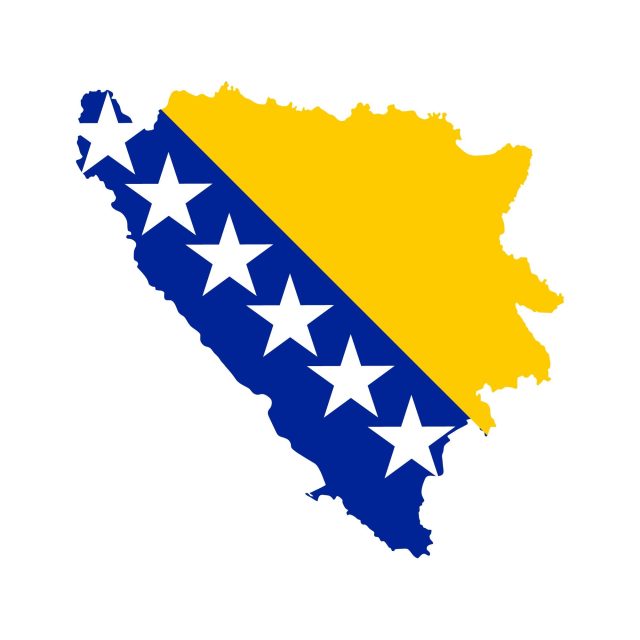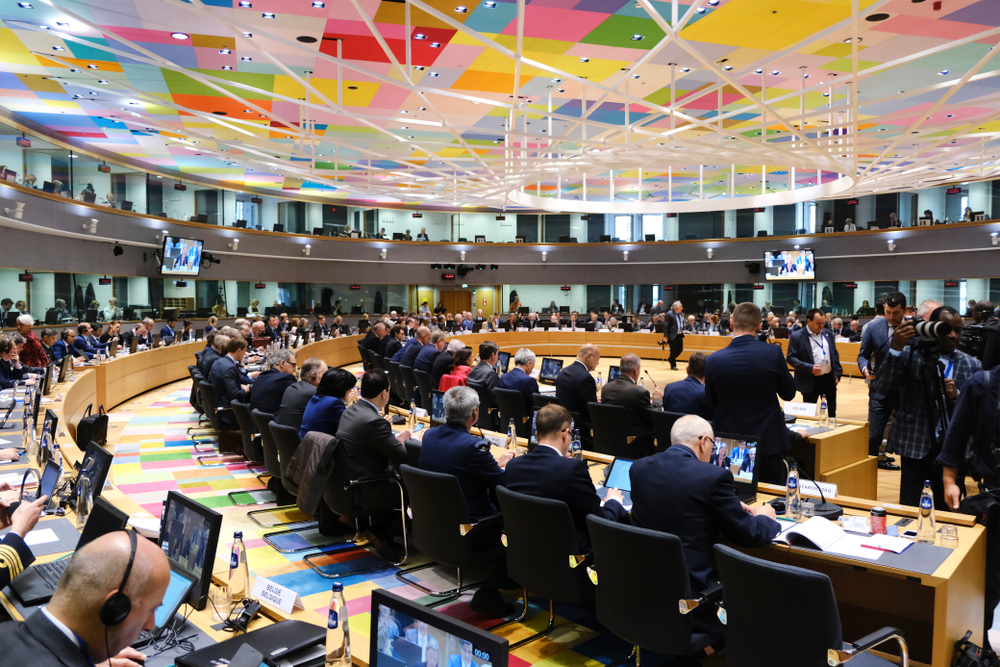
Bosnia and Herzegovina towards EU entry.
It would be the twenty-eighth “star” in the European firmament
 On March 21st of last year, a significant decision was taken by the European Council. They authorized the initiation of the necessary procedures to include Bosnia and Herzegovina as a member state of the European Union. This decision holds great importance for many reasons and has sparked discussions in several crucial countries within Europe.
On March 21st of last year, a significant decision was taken by the European Council. They authorized the initiation of the necessary procedures to include Bosnia and Herzegovina as a member state of the European Union. This decision holds great importance for many reasons and has sparked discussions in several crucial countries within Europe.
Several European countries, including the Netherlands, Denmark, France, and Estonia, have expressed significant concerns regarding the implementation of various reforms. According to the European Council website, these countries believe that new constitutional and electoral laws are necessary to ensure equality and non-discrimination, strengthen the rule of law, and combat corruption and organized crime. Additionally, these countries emphasize the importance of maintaining positive geopolitical relationships with Russia and Belarus, while also upholding human rights and freedom of the press. These issues are of great importance and require careful attention and consideration.
Bosnia-Herzegovina is a country that has faced numerous challenges since its inception in 1992, following the dissolution of Yugoslavia. The first few years of its existence were marred by a brutal conflict between three ethnic groups – the Bosniaks, Croats, and Serbs. This conflict lasted for three years, and it wasn’t until 1995 that peace was eventually established through the intervention of the United Nations and NATO. As part of the peace treaties, military contingents were deployed to the area to ensure that peace and stability were maintained. Even today, Bosnia-Herzegovina continues to face challenges, and it is essential to create a comprehensive understanding of its composition and the issues that it faces.
After the Bosnian conflict, a decision was made to divide the country into three distinct areas. The first area is known as the Federation of Bosnia and Herzegovina, which includes the entire western region and a significant portion of the central hinterland. This area encompasses major cities such as Sarajevo and Tuzla. The second area is the Serbian Republic of Bosnia and Herzegovina, which covers the north and east of the country, mainly corresponding with the Serbian border. Finally, the Brčko District in the northeast is a small region with its administrative autonomy.
Apart from the autonomous district of Brčko, Bosnia and Herzegovina was divided into two entities in 1995 – the Federation of Bosnia and Herzegovina, largely representing the Bosniak and Croatian population covering 51% of the national territory, and the Republika Srpska, which represents the Serbian population and covers 49% of the country. Each of these entities has its own system of governance which incorporates a series of agreements between different communities to ensure fair representation and administration.
In fact, Bosnia-Herzegovina is a country where three distinct ethnic groups with different religious beliefs coexist – the Muslim Bosniaks (50.7% of the population), the Orthodox Serbs (30.7%), and the Catholic Croats (15.2%). It is important to highlight that Bosnia-Herzegovina will become the first European country with a Muslim majority when it joins the EU.
The political and institutional framework is similarly complex: the Presidency of the Republic is in fact essentially held by a triumvirate, with three members elected by universal suffrage, each from their own ethnic-religious community of reference. In 2022, the Bosniak Denis Bećirović (SDP, S&D), the Croatian Željko Komšić (DF, pro-S&D), and the Serbian Željka Cvijanović (SNSD, ex pro-S&D) were elected.
The Presidency and parliamentary system of Bosnia and Herzegovina is a complex and unique political structure. While there is ideological continuity between the three members of the Presidency, the parliamentary picture is more intricate. In this case, the 42 parliamentarians are elected in an equally distributed manner, with 28 in the Bosniak-Croatian Federation and 14 in the Serbian Republic. The first party to be turned out is the Democratic Action Party (SDA), which is considered pro-PPE. With 17.23% of the vote and 9 seats, the SDA has emerged as a significant political force in the region.
However, first place was not sufficient to obtain the national government, so much so that the majority (quite weak counting on just 23 seats out of 42) sees the SNSD and the SDP in power in coalition with the Bosnian “twins” of the Croatian HDZ (PPE), the conservatives of People and Justice (NiP, NI) and the liberals of Naša Stranka (ALDE). The government is headed by Borjana Krišto (HDZ, EPP), a representative of the Croatian population, probably chosen to “please” the Catholics given that the party of the Croatian member of the Presidency was put into opposition with this maneuver. It should be underlined that Krišto is the first woman to hold the Presidency of the Council of Bosnia-Herzegovina, a further sign of a process of renewal in the country.
The opening of Bosnia-Herzegovina to the European Union was made possible due to the collective efforts of a group of nations from Central-Southern Europe. These nations include Austria, Croatia, Czech Republic, Greece, Italy, Slovakia, and Slovenia who collectively wrote a joint letter through their respective Ministers for European Affairs in order to push for negotiations. The decision to open Bosnia-Herzegovina to the European Union has been met with great satisfaction by Giorgia Meloni (FdI, ECR). She believes that this event will send a clear and unequivocal message to all the Western Balkans.
Bosnia-Herzegovina is a country that holds strategic importance in the Balkan region. Its membership in the EU would have far-reaching implications for the political landscape in the region. It would significantly weaken Serbia’s influence in the area and help to counterbalance Russia’s increasing involvement in the Balkans. However, the path to EU membership for Bosnia-Herzegovina is not without its challenges.
Firstly, the country would become the first Muslim-majority country to join the EU, which would require the extension of free movement to Bosnians. This would inevitably lead to cultural changes and adjustments that could be difficult to manage. Secondly, Bosnia-Herzegovina faces various economic and social challenges that would need to be addressed before it can join the EU. The country has the highest levels of income inequality in Europe, with a Gini coefficient that is a cause for concern. It also has a low fertility rate and a high unemployment rate of around 34%. The GDP per capita is just over half that of Bulgaria, the last EU country in this ranking.
In conclusion, the recent enlargement of the European Union to include Bosnia-Herzegovina has significant implications for the investment potential in the Balkan region.
This expansion presents a unique opportunity for the countries in the region to benefit from the EU’s economic and political integration. However, the enlargement process does not come without its challenges. Ethnic and religious differences, border management, and internal migration are particularly complex issues that must be addressed effectively to ensure the long-term success of this expansion.
As we saw, the Balkan region has a history of ethnic and religious conflict, which has often resulted in political instability and economic underdevelopment. Therefore, it is crucial to address these differences sensitively and inclusively. This will require significant efforts from both the EU and the local governments to promote dialogue, understanding, and respect among different communities.
Border management is another major challenge that needs to be addressed to ensure the successful integration of Bosnia-Herzegovina into the EU. Additionally, the management of internal migration within the union is also a crucial issue that needs to be considered.
In the end, the enlargement of the EU always presents both opportunities and challenges and the successful management of these challenges will be crucial in determining the long-term success of this expansion. With careful planning, cooperation, and effective implementation of policies and regulations, the EU and the local governments can ensure that this expansion leads to a more prosperous, stable, and integrated region.



 Subscribe
Subscribe